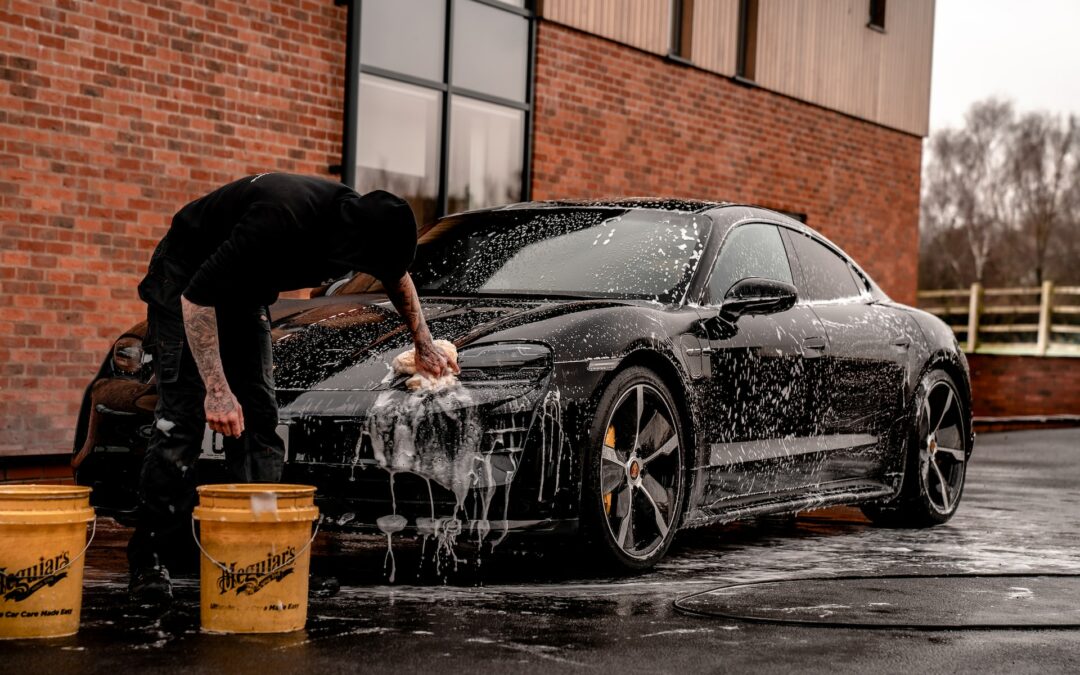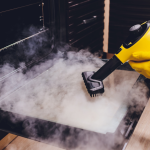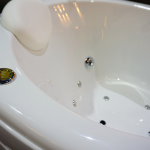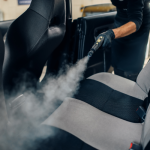Washing a car in a professional car wash is effective and gives excellent results. But at the same time, it can be risky. Brushes in automatic car washes can be rough and sharp, which means there is a risk of scratching the car paint. In addition, some elements of the vehicle, such as the interior (seats, dashboard, or places under the seats), require proper manual care. So it is very significant to clean and wash your car regularly if you want to keep it in good condition for a long time. However, it is worth knowing what to do. Then cleaning the vehicle will bring good results and not cause damage. See how to become a professional detailer in your garage! With this text, you will find detailed step-by-step instructions on how to wash your car.
How often should we wash the car?
There is no single good answer to this question. A lot depends on where we store the car (in an underground garage, free-standing garage, or in the yard under the open sky), how often we use it, what climate we live in, and how polluted our neighbourhood is. Weather conditions also affect the rate of dirtiness of the vehicle: when it often rains or snow and the wind blows, the car may need washing more often. In the autumn and the winter, you must take particular care because road salt and dried-up mud can damage the car paint. It is also worth paying attention to cleaning the car interior regularly. It is the best way to avoid worse consequences. Crumbs or rubbish can attract cockroaches and other insects, cause a bad smell and make the interior age faster. Regular weekly or fortnightly cleaning should be sufficient.
Are you planning to clean your car? Remember about precautionary measures!
- Before cleaning and washing the vehicle manually, read the points below and make sure you are prepared properly.
- Remove all jewellery, especially rings and bracelets, which could scratch the paint on the car when you wash the car body by hand.
- Put on working clothes, such that may become worn or dirty. Choose clothes without metal elements. Avoid belts or metal fasteners that can also scratch the paintwork. It will minimize the risk of causing damage.
- Park your car in some place where you will not disturb other drivers and can act freely. Make sure that the vehicle is not exposed to direct sunlight, which will cause the detergents and water to dry out too quickly.
- If you use strong detergents, wear protective rubber gloves to protect the skin on your hands from damage.
What do you need to wash your car thoroughly?
Before you wash your vehicle, get the necessary accessories and cleaning products to make cleaning quick, easy and effective. It is better to prepare everything in advance. Thanks to that, the whole process runs smoothly.
A detergent designed for washing a car
Some poor-quality detergents or cleaning agents not suited to the material you want to wash can damage this fabric and leave good marks and streaks on it. You need a cleaner that is ruthless on dirt (for example, when removing bird droppings from car paint or windshield) but gentle on bodywork, leather, or other materials. One safe and effective cleaning product will be Fortador Blue Magic Car soap. It is a universal polymer-based concentrated cleaning fluid that removes dirt much better and does not leave unsightly marks on the cleaned surfaces. Another good measure is dishwashing liquid diluted in water which you can spread on the cleaned surface with a sponge or microfiber cloth.
Glass cleaner
Due to the large selection of products on the market, purchasing the right glass cleaner is not so easy. It is best to choose products that do not contain ammonia, which could damage the glass. It is significant that the cleaning agent simultaneously removes even bad dirt and does not leave unsightly streaks that reduce visibility and are simply ugly. Fortador 50 to 1 Glass Cleaner is an alcohol-based product and a good choice, as it does not damage glass, but is really effective at removing dirt. It even copes with stubborn and greasy stains that are difficult to remove.
Microfiber cloth
Sponges, especially coarse or wire sponges, can damage the car paint and windows, so you should use microfiber cloths instead of sponges when washing your car.
Two or three buckets
When washing your car, you will need two buckets. Fill one bucket with water and cleaning fluid in which you will dip a clean microfiber cloth. Fill the other bucket with clean water to rinse the clothes. If you want, you can also prepare a third bucket of water which will come in handy when washing the dirtiest part of the vehicle: wheels and rims.
Fortador steam cleaner
In the effective and efficient washing of the vehicle, there is also a steam cleaner, which will wash any part of the car without the need to use any detergents, especially strong ones. High-pressure hot steam can even deal with stubborn stains. And at the same time, it is an ecological and economical solution. The Fortador Volt MINI steam cleaner will help you when you wash your car at home. It is a compact and portable but strong and efficient device. A rich set of tips and accessories will help you reach every nook and cranny of the vehicle, even the hard-to-reach space under the seats. The washer can clean the car body, wheels, windows, and material such as leather.
Additional accessories
- pressure washer
- vacuum cleaner/leaf blower
- hose
- wheel washing brush
- headlight restoration kit (optional)
- car wax
Washing the vehicle – a step-by-step guide
Before you wash and clean your vehicle appropriately, park it in a shaded place. Prepare all the accessories and cleaning products that you will need during each cleaning step. Make sure you have easy access to running water and a hose.
- Step 1. Rinsing
Use a hose or a pressure washer to spray water over the entire car, including the tires. In this way, you will pre-remove superficial loose dirt. It will significantly facilitate further work.
- Step 2. Washing tires and rims
Start with what is the dirtiest and the most difficult to clean. Therefore, tires and rims should be the priority. Rinse them thoroughly with water, and use the brush to reach every nook and cranny between the rims. Clean every element, including the most hidden one.
- Step 3. Car body washing
Once you remove the dirt from the tires and rims, start washing the car body. Dip a microfiber cloth in a bucket of water and detergent and wash the body. Remember to move from top to bottom. Do not make chaotic or circular movements, because it could leave streaks hard to remove. Wash your car in batches, not all at once. This will make your job easier. Periodically re-soak the microfiber cloth in a bucket of water and detergent to keep it moist and with detergent. Finally, rinse the cloth in a bucket of fresh water so as not to spread the collected dirt around the car.
- Step 4. Rinse again
Using a hose, rinse the vehicle again to remove all water and detergent from the car body. Examine the entire surface thoroughly to be sure you have cleaned each batch effectively. If any element needs improvement, do it now.
- Step 5. Window cleaning
When you clean the tires and bodywork, start washing the windows. Spray them with a cleaning agent intended for window cleaning and wash them. Make movements with a clean microfiber cloth up and down so that there are no streaks on the glass, which will be very difficult to remove.
- Step 6. Rinse again
Make sure the outside of the car is cleaned from the outside, and then rinse the car with water again. This frequent rinsing with water helps prevent drip marks and sediment from remaining on the car body.
- Step 7. Cleaning thresholds and frames
Now is a good time to use a damp microfiber cloth and wipe the sills and any dirty protruding edges that have not been washed previously. Do it very carefully so that the results of your work are satisfactory.
- Step 8. Cleaning the interior of the car
Use a vacuum cleaner to remove all crumbs and debris from the car, especially the rugs and recesses under the seats. Use a special car interior cleaner or diluted dishwashing liquid to clean the dashboard and other parts. A microfiber cloth will also work in this step, thanks to which you can easily distribute the detergent on all surfaces and remove dirt. However, remember that it should be a different cloth than the one you used when washing the car body or tires. Do not omit any elements, even hard-to-reach places or vents, so that cleaning is effective.
- Step 9. Drying
If you have cleaned the entire car inside and out, proceed to the next step: to dry the entire vehicle. The best way to do this efficiently and quickly is by applying the two-towel method. Use the first towel to wipe most of the water, and the second to dry the surface. The car windows were left open for a while to allow the interior to dry thoroughly.
- Step 10. Security and protection
This step is optional but highly recommended. It is not worth ignoring it! After you have cleaned the entire car and dried it, use your favorite wax to keep the car shiny and looking like new. In addition, such a protective layer will protect the car from damage and dirt, which will not stick to its surface now. Ready!




